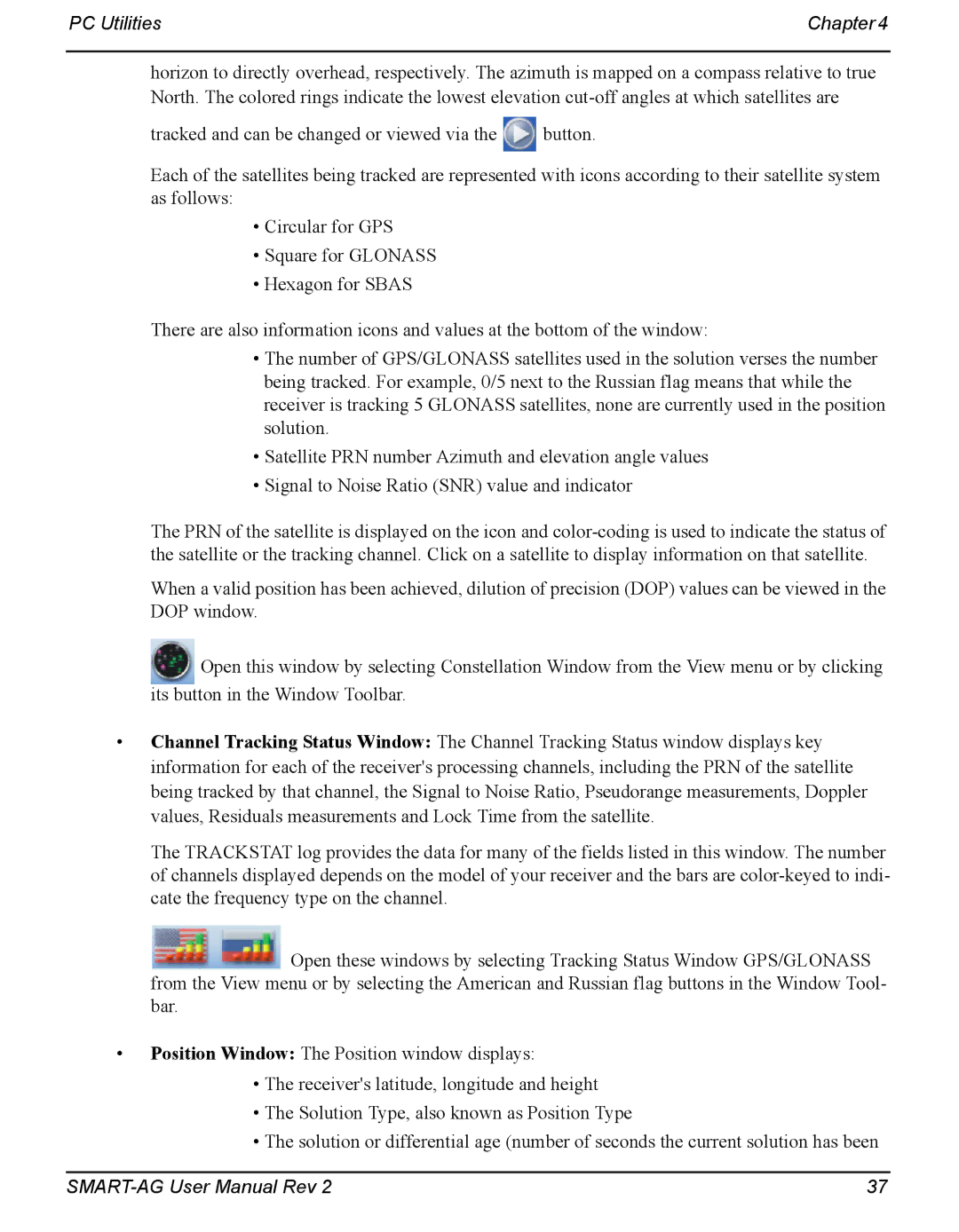
PC Utilities | Chapter 4 |
horizon to directly overhead, respectively. The azimuth is mapped on a compass relative to true North. The colored rings indicate the lowest elevation
tracked and can be changed or viewed via the ![]() button.
button.
Each of the satellites being tracked are represented with icons according to their satellite system as follows:
•Circular for GPS
•Square for GLONASS
•Hexagon for SBAS
There are also information icons and values at the bottom of the window:
•The number of GPS/GLONASS satellites used in the solution verses the number being tracked. For example, 0/5 next to the Russian flag means that while the receiver is tracking 5 GLONASS satellites, none are currently used in the position solution.
•Satellite PRN number Azimuth and elevation angle values
•Signal to Noise Ratio (SNR) value and indicator
The PRN of the satellite is displayed on the icon and
When a valid position has been achieved, dilution of precision (DOP) values can be viewed in the DOP window.
Open this window by selecting Constellation Window from the View menu or by clicking its button in the Window Toolbar.
•Channel Tracking Status Window: The Channel Tracking Status window displays key information for each of the receiver's processing channels, including the PRN of the satellite being tracked by that channel, the Signal to Noise Ratio, Pseudorange measurements, Doppler values, Residuals measurements and Lock Time from the satellite.
The TRACKSTAT log provides the data for many of the fields listed in this window. The number of channels displayed depends on the model of your receiver and the bars are
![]() Open these windows by selecting Tracking Status Window GPS/GLONASS from the View menu or by selecting the American and Russian flag buttons in the Window Tool- bar.
Open these windows by selecting Tracking Status Window GPS/GLONASS from the View menu or by selecting the American and Russian flag buttons in the Window Tool- bar.
•Position Window: The Position window displays:
•The receiver's latitude, longitude and height
•The Solution Type, also known as Position Type
•The solution or differential age (number of seconds the current solution has been
37 |
